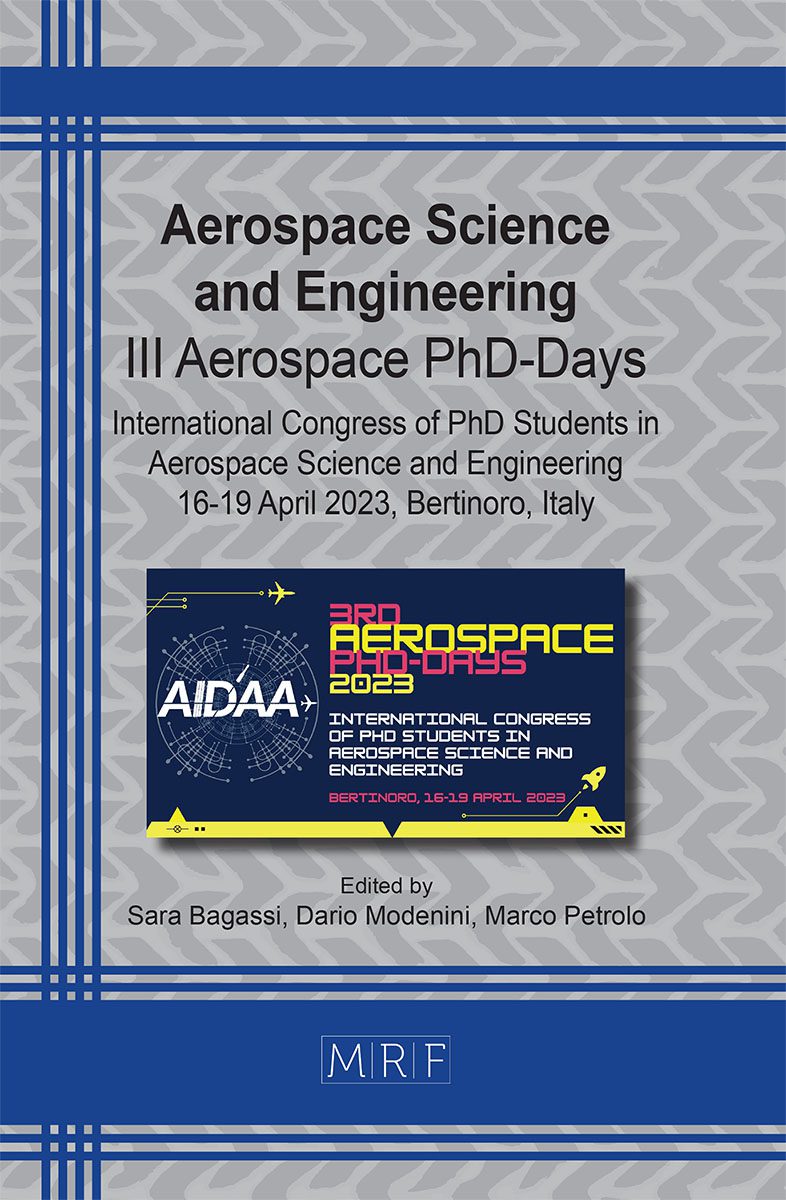Coupled 3D peridynamics and refined 2D finite elements models embedded in a global\local approach
Marco Enea
download PDFAbstract. The present work proposes a two-step global\local approach for the three-dimensional analysis of structures . In particular, the first step makes use of classical finite element modelling, based on classical 2D elements, whereas a refined higher-order model based on the Carrera Unified Formulation (CUF) is coupled with a 3D peridynamics domain for the local analysis. The solution from the proposed method is compared with a full FEM solution. The objective of the present work is to pave the way to the building of a framework where coupled FE\PD models are embedded into this global\local approach to solve progressive failure problems.
Keywords
Global\local, Peridynamics, Higher-Order Finite Elements, Carrera Unified Formulation
Published online 9/1/2023, 6 pages
Copyright © 2023 by the author(s)
Published under license by Materials Research Forum LLC., Millersville PA, USA
Citation: Marco Enea, Coupled 3D peridynamics and refined 2D finite elements models embedded in a global\local approach, Materials Research Proceedings, Vol. 33, pp 341-346, 2023
DOI: https://doi.org/10.21741/9781644902677-50
The article was published as article 50 of the book Aerospace Science and Engineering
![]() Content from this work may be used under the terms of the Creative Commons Attribution 3.0 license. Any further distribution of this work must maintain attribution to the author(s) and the title of the work, journal citation and DOI.
Content from this work may be used under the terms of the Creative Commons Attribution 3.0 license. Any further distribution of this work must maintain attribution to the author(s) and the title of the work, journal citation and DOI.
References
[1] A. Hillerborg, M. Modéeer, and P. Petersson, Analysis of crack formation and crack growth in concrete by means of fracture mechanics and finite elements.,Cement and Concrete Research, 6 (1976):773-781, https://doi.org/10.1016/0008-8846(76)90007-7
[2] N. Moes, J. Dolbow, and T. Belytschko, A finite element method for crack growth without remeshing, International Journal for Numerical Methods in Engineering, 46 (1999) 131-150. https://doi.org/10.1002/(SICI)1097-0207(19990910)46:1<131::AID-NME726>3.0.CO;2-J
[3] S.A. Silling, Reformulation of elasticity theory for discontinuities and long-range forces, Journal of the Mechanics and Physics of Solids 48 (2000) 175-209. https://doi.org/10.1016/S0022-5096(99)00029-0
[4] A. Pagani, E. Carrera, Coupling 3D peridynamics and high order 1D finite elements based on local elasticity for the linear static analysis of solid beams and thin-walled reinforced structures, International Journal for Numerical Methods in Engineering 121(2020) 5066–5081. https://doi.org/10.1002/nme.6510
[5] E. Carrera, M. Cinefra, M. Petrolo, E. Zappino. Finite Element Analysis of Structures through Unified Formulation. Wiley & Sons, Hoboken, New Jersey. 2014.
[6] A. Pagani, M. Enea, E. Carrera, Quasi-static fracture analysis by coupled three-dimensional peridynamics and high order one-dimensional finite elements based on local elasticity. International Journal for Numerical Methods in Engineering 123(2022) 1098-1113. https://doi.org/10.1002/nme.6890
[7] E. Carrera, A. de Miguel, M. Filippi, I. Kaleel, A. Pagani, M. Petrolo, E. Zappino, Global-local plug-in for high-fidelity composite stress analysis in Femap/NX Nastran, Mechanics of Advanced Materials and Structures, 28 (2021) 1121-1127. https://doi.org/10.1080/15376494.2019.1655689
[8] R. Augello, A. Pagani, E. Carrera, A. Iannotta. Stress and failure onset analysis of thin composite deployables by global/local approach. AIAA Journal, (2022) 1-13. https://doi.org/10.2514/1.J061899












